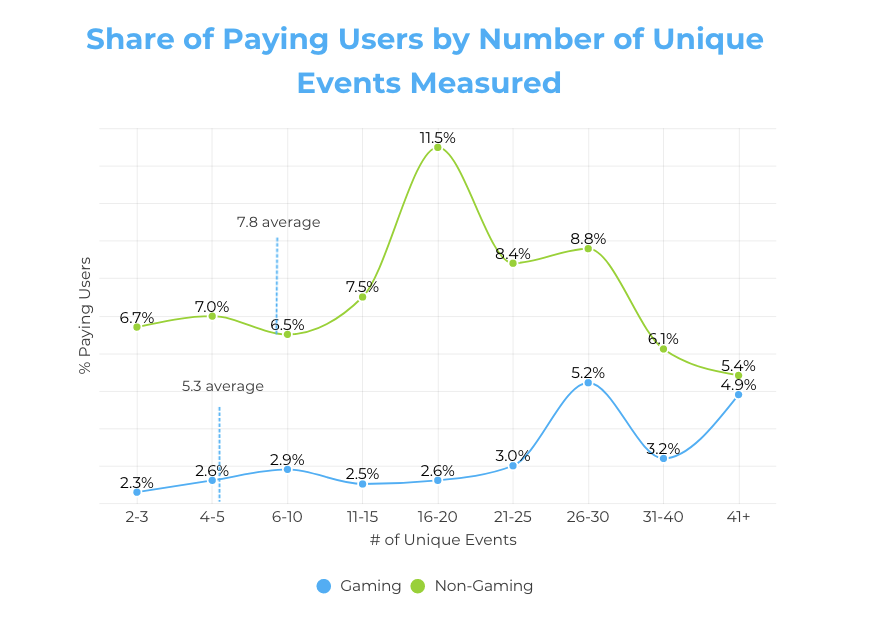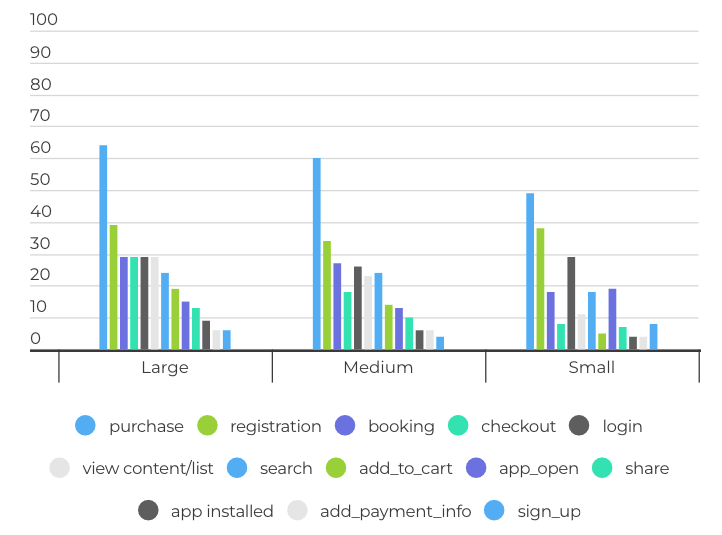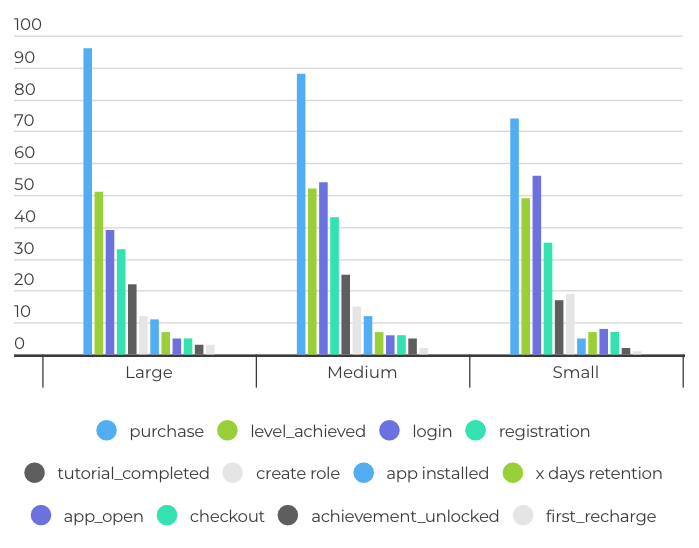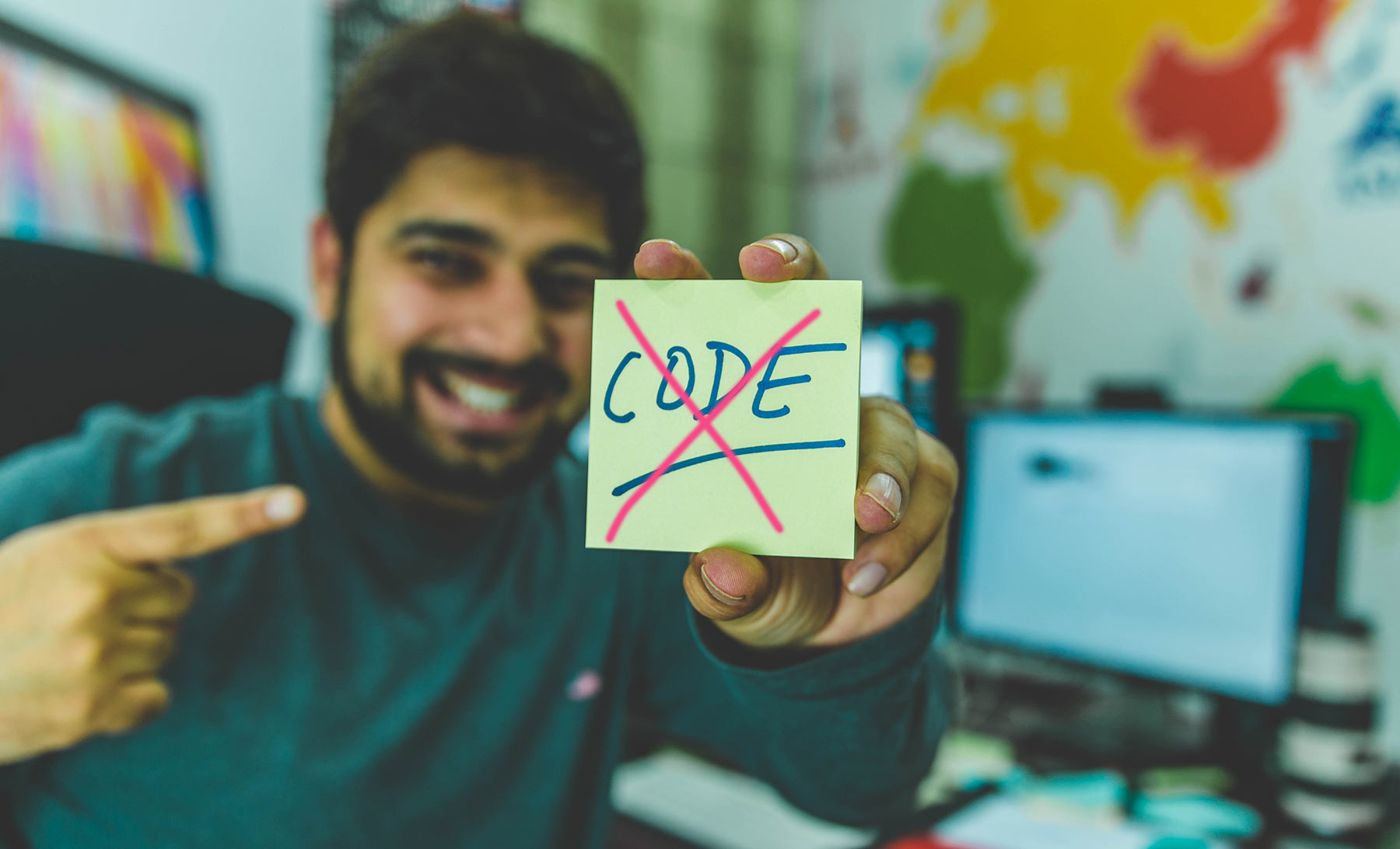Event-based marketing is a type of marketing automation built around responding to specific user activity. It’s much more accurate and granular than the traditional behavior-based approach, and significantly more effective. Already in use by games, ecommerce, and travel companies, it’s the next stage in the development of marketing automations.
However, the technical demands are relatively high, including both the requirement to build the tech and the marketing know-how to structure it for maximal effectiveness — as well as integrating it with other business processes.
In this post, we’ll look at what event-based marketing is, how it works, and how to do it.
What is event-based marketing?
Event-based marketing is a form of automated marketing that’s triggered by user actions. Sometimes referred to as trigger marketing or event-initiated marketing, it seeks to identify key events in customer and user lifecycles, then use them as triggers for targeted communications. When a user makes a specific action, a marketing action, set up ahead of time, is automatically triggered.
Event-based marketing is increasingly popular because it allows companies to be responsive at scale. Done right, it lets you align campaigns with users’ actions and interests, ensuring that your messaging is always relevant and welcome.
Why do we need the term ‘event-based marketing’?
In the past, digital marketing tended to focus on sessions. We had information about when users logged into a site or opened an app, and we’d use that to make decisions about what to send them when. But session-based marketing has two major shortcomings.
One is that sessions bleed into each other across applications and devices. I’ve got a bunch of tabs open on my desktop, a bunch more on my phone, and I’m guessing you do too. It’s like that every day. Knowing that I’m logged in isn’t a lot of use to marketers.
The other is that there’s a lot of different stuff you can do on a modern website — and an even wider range of potential actions in a mobile app. Knowing that I’m on the site doesn’t tell you much about why, and therefore you can’t derive a lot of actionable insights from it. This is why you get chased around the web by ads for the thing you just bought, even though you now own as many vehicles, shoes or barbecues as you want. Knowing that you have recently looked at those things (session-based) is causing those companies to waste ad spend chasing someone who already bought and moved on. Event-based marketing would reach out to you after an event that signified that you were evaluating options, with content that helped guide your decision.
Identifying events
An event is an action a user takes on a website or app that you can draw an actionable understanding from. Some similar tactics have been in use for years because they’re relatively easy to do at scale, unambiguous, and can be acted on effectively. A good example is ecommerce cart abandonment.
Ecommerce carts get abandoned a lot. Someone puts things in the cart, then never checks out. Or you have checkout abandonment. Someone starts the checkout process but never finishes. So you know they’re interested in the product. Statistically you know the main reasons carts and checkout flows are abandoned — shipping costs, sticker shock, and so on. So even if your response isn’t personalized, you can reach out to abandoners with free shipping and discount codes. You’ll be wrong about a lot of their reasons, but right about enough to affect your bottom line. So even though it’s inaccurate it’s still worth doing. That’s behavior-based marketing, but it’s not event-based.
An event-based approach to the same problem might involve measuring:
- User adds item to cart
- User goes to checkout
- User confirms shipping details
- User confirms billing details
- Payment successful — or…
- Payment unsuccessful
- User successfully checks out
That’s much more granular, and it both eliminates a lot of the uncertainty the behavior-based approach entails and increases the accuracy of the support you’re able to offer.
Which events should you track?
The most valuable events to track vary from space to space, and ultimately from app to app. Like everything else in business, your mileage may vary, and your data is far and away the most valuable kind of data.
Having said which, these are the most tracked events for some of the most popular implementations of event-based marketing:
Finance:
- Registration
- Login
- Purchase
- App open
- Share
- App installed
- Sign up
- Checkout
- Logout
- Tutorial completed
- View content/list
Shopping:
- Purchase
- Add to cart
- View content/list
- Login
- Registration
- Checkout
- Search
- Add to wishlist
- Share
- App open
- Cart view
- Push notification
- App installed
- Application updated
Travel:
- Purchase
- Registration
- Booking
- Checkout
- Login
- View content/list
- Search
- Add to cart
- App open
- Share
- App installed
- Add payment info
- Sign up
Gaming:
- Purchase
- Level achieved
- Tutorial completed
- Login
- Registration
- Create role (adventure)
- App installed (role-playing)
- X days retention (role-playing)
- App open (role-playing)
- Checkout (adventure/role-playing)
- Achievement unlocked (role-playing)
- First recharge (role-playing)
- Share
In each case, the most crucial events for maximizing revenue and matching user interests are the most popular to track. So it makes sense to try to identify those events for your business.
Mapping events
Each event is like a turning point on the road of your user journey. That includes their route to initial purchase. But don’t stop there. Instead, think about post-purchase journeys too. For SaaS companies there is no ‘post-purchase,’ you always have to work on retention and churn minimization. But many ecommerce companies have a similar experience: they have to encourage repeat customers, because that’s the source of the majority of their profits.
Start identifying events in these terms, then build messaging to match events. B2B marketers with longer, more complex buyer journeys are already familiar with a multiphase process including evaluation and comparison. As consumer choice expands, consumer decision-making processes, particularly about big-ticket items, increasingly resemble such processes.
Measuring events
Any time a user navigates between pages, that action can be noted. If you’re using cookies to identify users, the user and the action can be linked, and that user can be offered appropriate messaging. With interactive on-page elements even actions on a single page can be used as events. This is usually done in JavaScript using something like:
analytics.track(event, [properties], [options], [callback]);
It’s equally important to measure events in mobile apps, which is often easier. It’s often easier to link actions with users on mobile devices too. However, the fundamental process is the same.
When events are measured, they can also record information about the event. Consider how useful it is to know that a user clicked away from a page, vs knowing how long they were on the page and which page they went to next. It’s a big difference. Event recording can be built to collect and contain detailed information about user behavior, meaning the messaging served to that user isn’t just targeted to their buyer journey stage and identity but to their specific action too.
Each event has three parts: an identity, a change in the state of your application (because the user has done something) and attributes stored locally inside the event. This is usually done in JavaScript in web apps; events tracking for mobile apps can be built into the app by developers or supplied by a range of third-party providers in the same way as user tracking and analytics for web pages.
Creating messaging
When you have identified your key events, you should start creating messaging that matches the events. Always start with the desired outcome. So for each event, what would you like your user to do next?
As an example, let’s say our event is a user opening a menu to your tool’s advanced features. What’s the outcome you want? Ideally, you want that user to experience success using those tools, so they go on to get more value from your product. Armed with this knowledge you can create a library of how-to videos or a knowledge base that supports this outcome, and guide your user towards it right when they open the menu. When they need knowledge, it appears — because you linked events with messaging.
You should build a map — like a decision tree, mapped onto your customer journey — with each event matched by appropriate content, and showing what happens next for the user.
Should you measure more events or fewer?
More isn’t always better. But on the whole, with some caveats, marketers who measure more events get better results — up to a point.

(This graph maps share of paying users against events measured: it has nothing to say about revenue. Capturing the most users might not result in the highest revenue, but the picture it appears to show is a point of diminishing returns.)
As we can see, this isn’t a question of measuring everything. Rather, it’s about increasing the granularity of your view of the customer journey, and increasing the number of valuable interactions you’re able to offer customers as a result.
This graphic shows the percentage of apps that measure a range of events:

These are travel apps. The two sectors most likely to use event-based marketing are gaming and shopping, with travel in third place. For gaming apps, the main goal is to increase the LTV of highly-engaged players, with a secondary goal of increasing the number of players matching this description. Here are the same figures for role-playing games:

The gap between the largest and smallest games is even starker: nearly all the largest games collect data on purchase, compared to just three-quarters of the smallest. The lesson is clear: identify the highest-value events first. You can do that from your own data, or by comparing your app with others in the same space and targeting the event that best correlates with growth.
When you’ve done that, you’re ready to start mapping those events, matching them with messaging, and setting up event triggers.
Tools to use for event-based marketing
Event-based marketing can be done using existing tools. Platforms like Splash will help you build out event-based marketing, but as always, beware of platform dependency — and the difficulty of integration with the rest of your stack.
For marketers who are already using a large, diverse stack, some of the tools you’re already using can be used for event-based marketing. This includes:
Analytics tools
If you’re already using an analytics tool, it might have the capability to record events in your web app. That includes:
Kissmetrics
Kissmetrics’ Use/Experience lifecycle phase lets you track events in-app, and also on social media platforms, letting you build a unified view of your customers. That’s important for marketing strategy, but it’s the event tracking that really lets you reach them in the moment.
Amplitude
Amplitude lets you track events, including custom events which can be quickly created from existing event types. So as your understanding of customer journeys evolves, you can use Amplitude to keep up.
Crucially, both tools offer personal attribution, meaning that unlike Google Analytics’ event tracking tool, you don’t just know what happened: you know who did it too.
However, they’re primarily data-gathering tools that don’t come with much in the way of outward channels. And they offer just one part of the puzzle; a sophisticated marketing stack will be pulling data from multiple sources. You’ll need to bring it all together in a ‘single source of truth’: one set of records, that respond to changes from everywhere, then serve as a database for the downstream part of your stack that actually communicates with your users.
Customer data platforms
Segment
The customer data platform go-to, Segment is highly versatile and lets you plug data from all your analytics tools in one end. Then, data from Segment is piped through to Mailchimp, your website, social platforms and other customer-facing tools. Segment is particularly good for email marketing based on a wide range of events and other customer data. However, setting it up to take maximal advantage requires significant skill.
Tealium
Tealium lets you collect data from disparate sources and collate it in single customer views, including tracking customers across platforms and devices, allowing you to plan and execute marketing based on who they are, not where they are.
Customer contact tools
One of the most effective ways to contact customers with relatively time-elastic messaging is email. With the mighty Mailchimp leading the pack, email automation tools can stand ready with predrafted messaging for each event, waiting only for customer details to be piped through from the Customer Data Platform and sent in response to events.
In-app
In-app messaging in mobile apps can be the most effective way to communicate with users — especially when time is short. Users who start using advanced features, or gaming users who try to use premium character creation features, might not be interested in an email — it might arrive too late, when they’re no longer in the same train of thought. In-app messaging can also support exploration of more advanced features, helping users enjoy success instead of enduring confusion and frustration.
Chat
Chat can be a great way to get messaging to web app users without affecting the main codebase of the site. Especially effective for top-of-funnel events and for sorting and nurturing early-stage leads, it can also be a powerful channel for customer success and support.
How AndPlus can help
Event-based marketing is hugely effective when it’s done right. It gives us insight into who’s doing what, and why, at a level of granularity that legacy tracking systems can’t come close to matching. It’s a massive opportunity. But it’s also really easy to get wrong. That could be as simple as tracking too many events so you get lost in the long grass. But it could be much more complex. Every time you set up a new, more complex system for tracking and automating marketing, you run a serious risk: more complex mechanisms are easier to break.
That means you probably want to set up event-based marketing with an experienced partner. Yes, you need someone with the technical skills to write the JavaScript, but it doesn’t stop there. Like any complex marketing automation, your new event-based marketing system needs to be tested, checked and calibrated, and you need a partner with the business chops to know which events to measure to move your business forward.
At AndPlus we’ve built event-based marketing automations for mobile and web apps, in a diverse range of business sectors. Our team has the technical expertise to build your automations, and the business understanding to work with you to create the right ones.
Takeaways
- Event-based marketing uses events as triggers. Events are changes in the state of your app — usually as a result of actions your users take.
- It’s far more granular than previous kinds of marketing automation.
- Event-based marketing is a huge opportunity but also a major risk. It has to be implemented right.
















